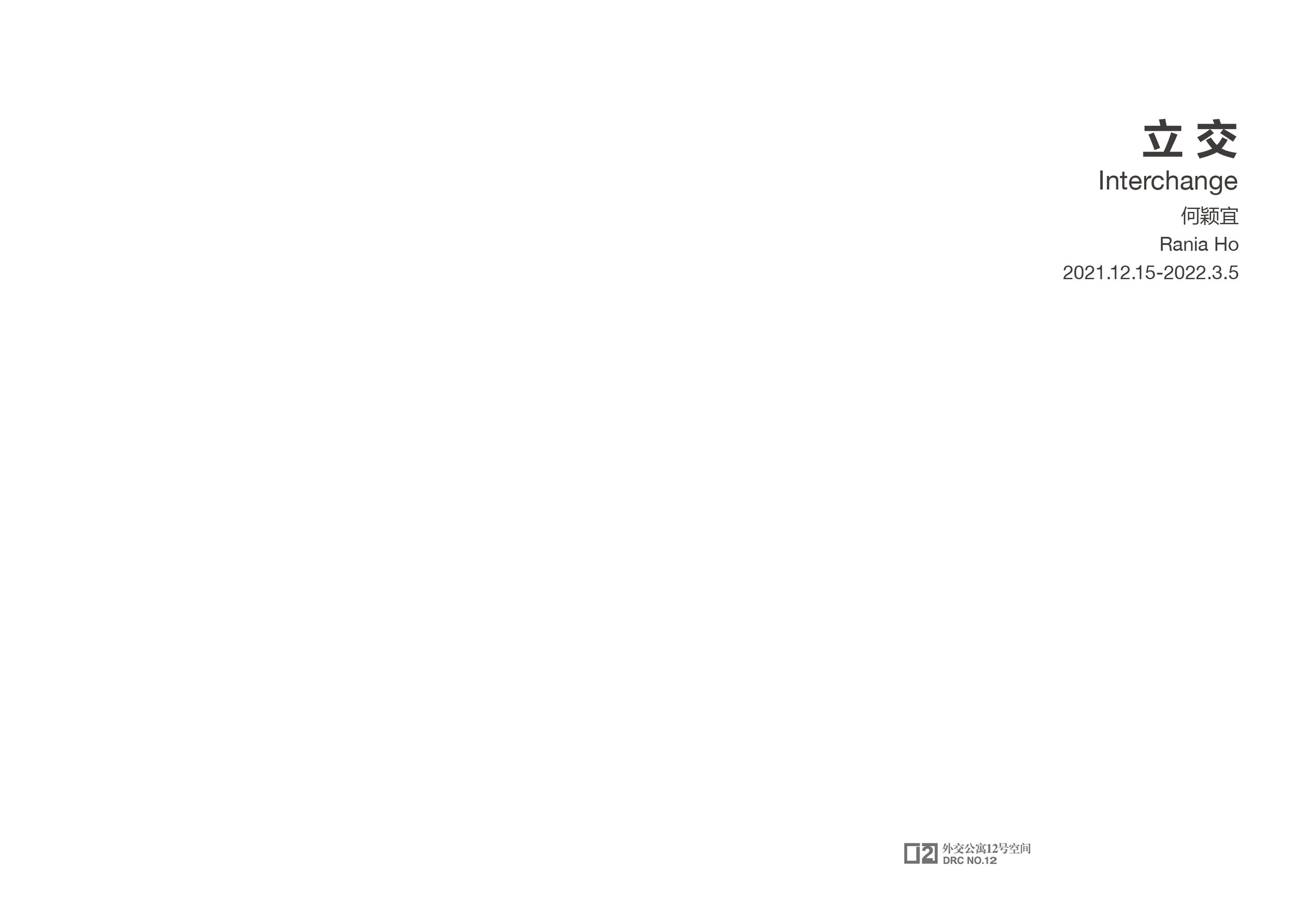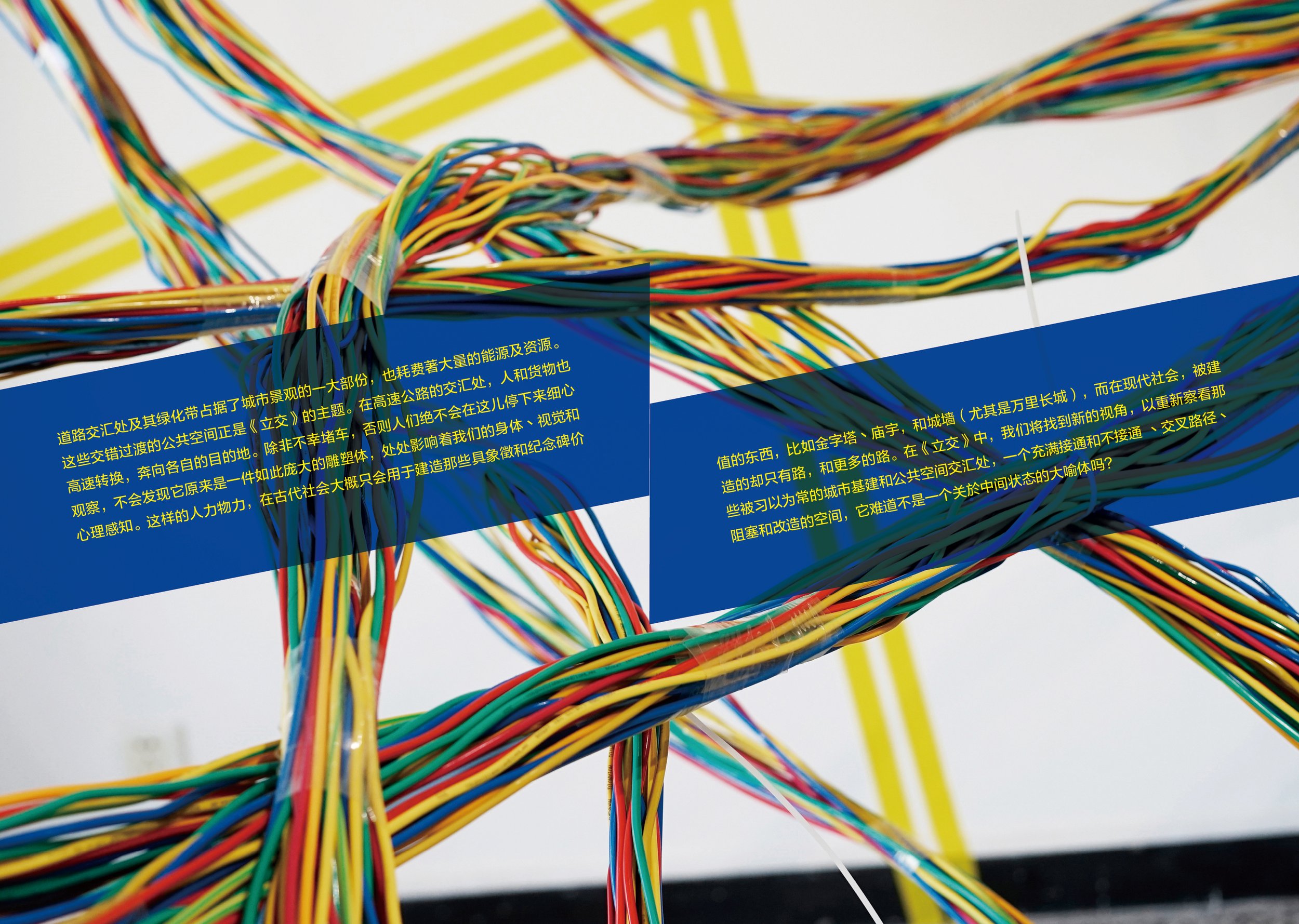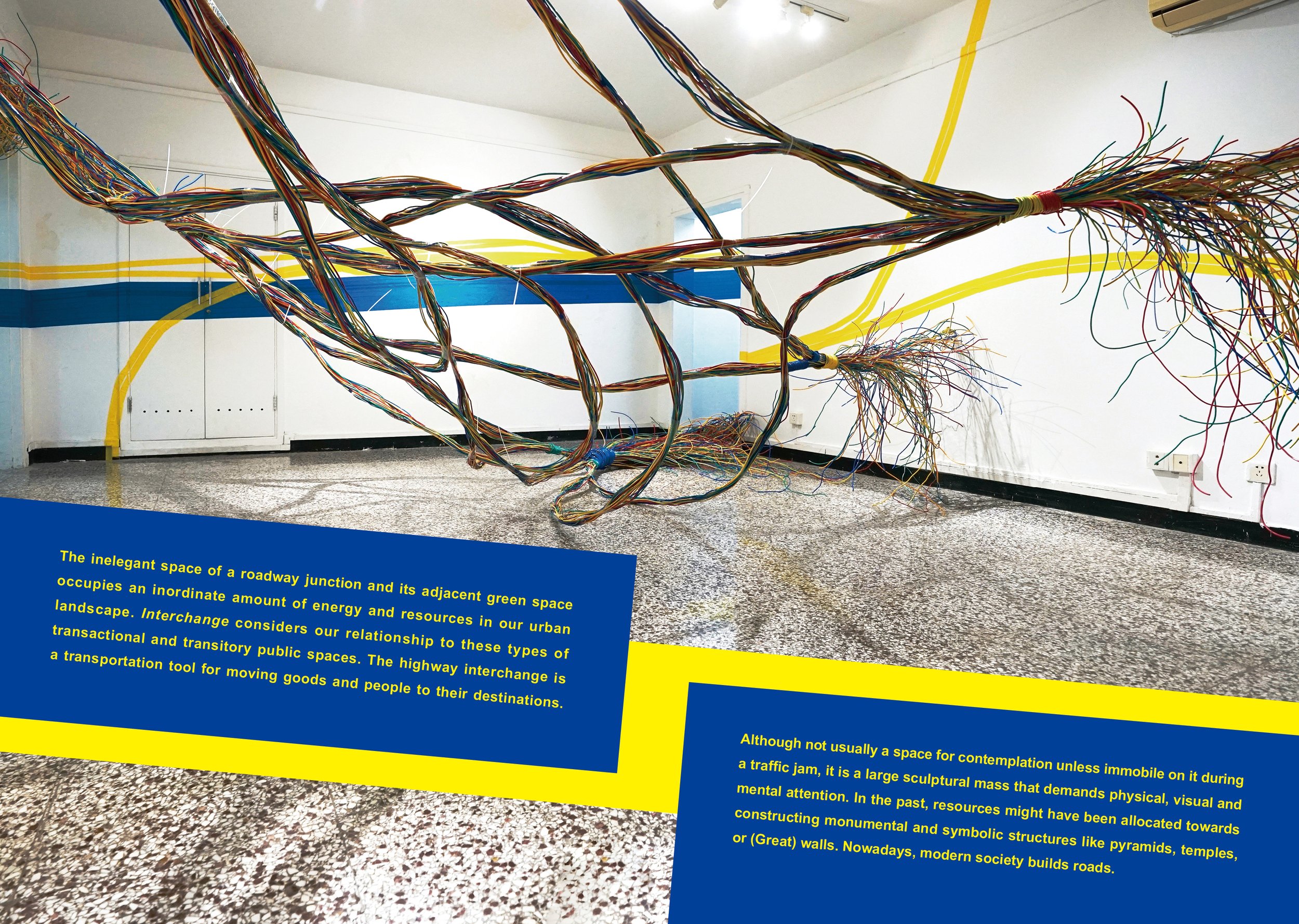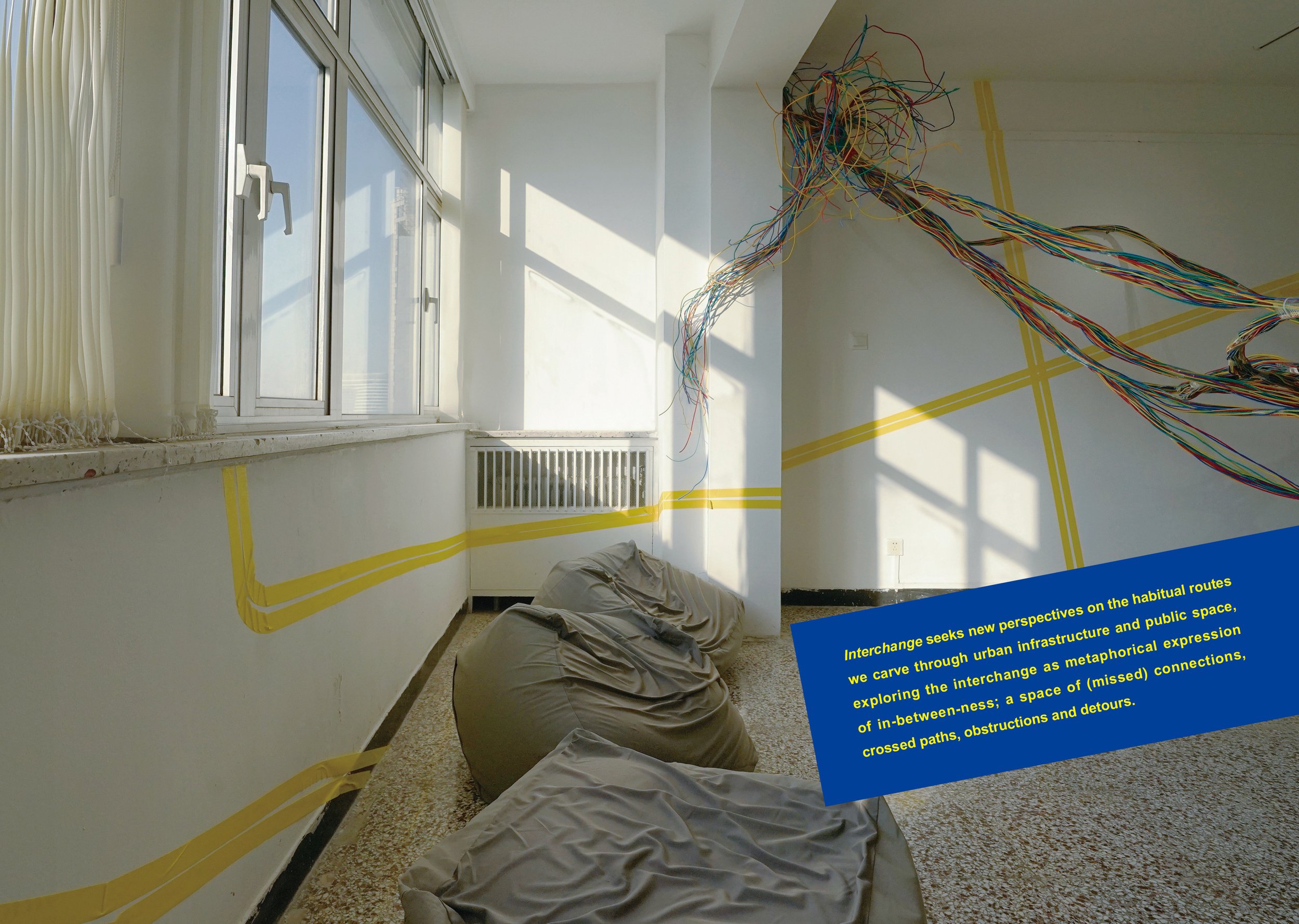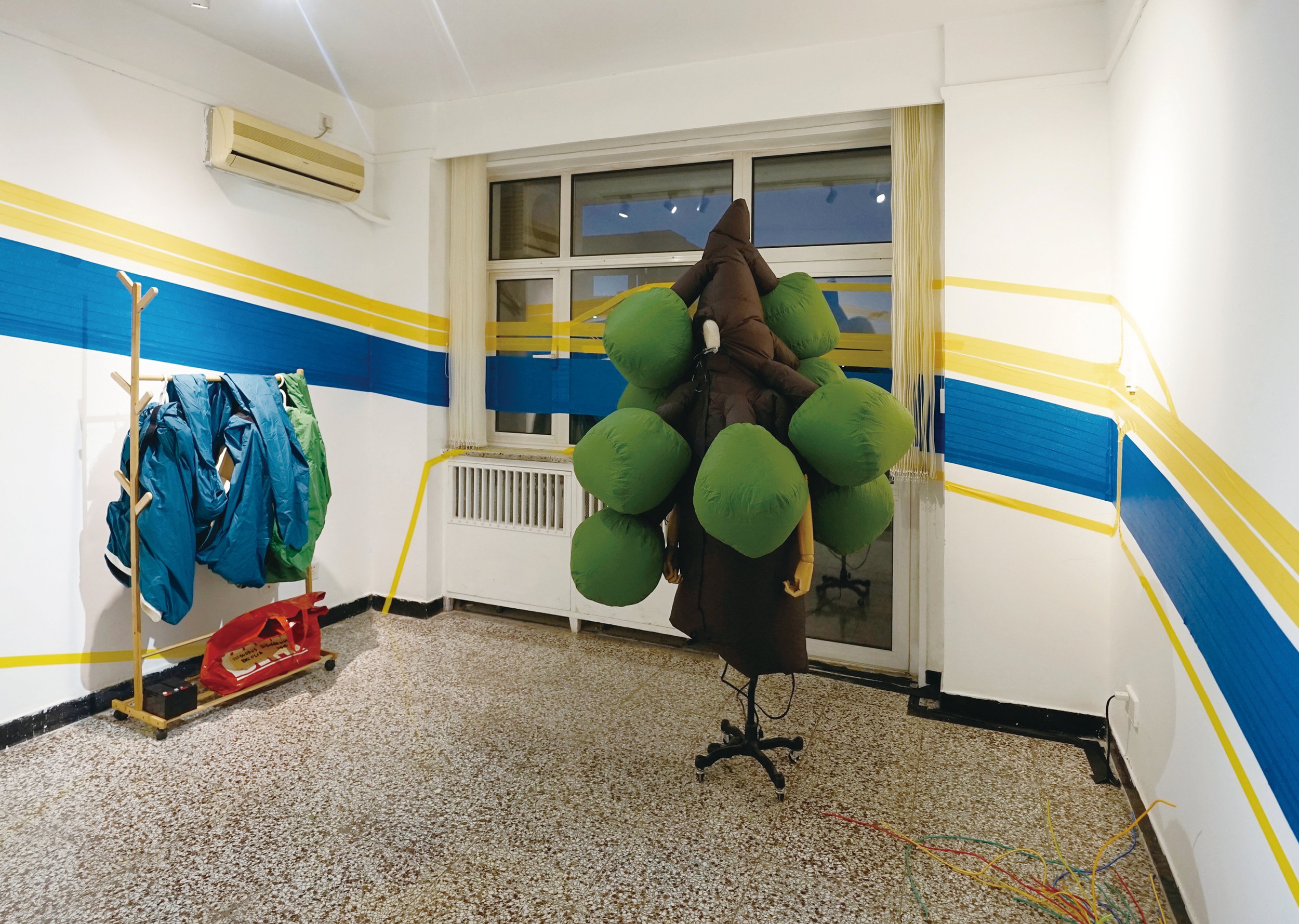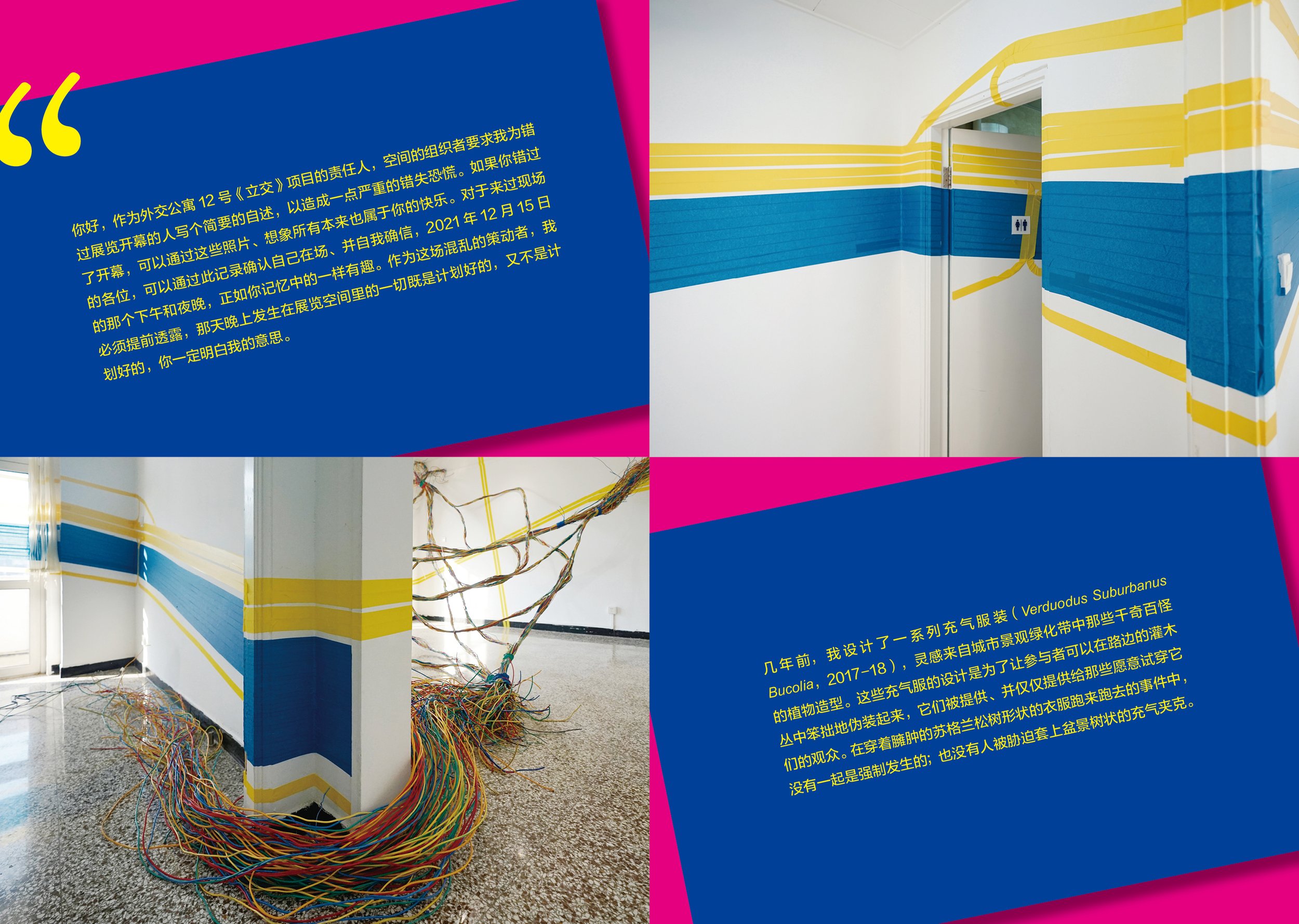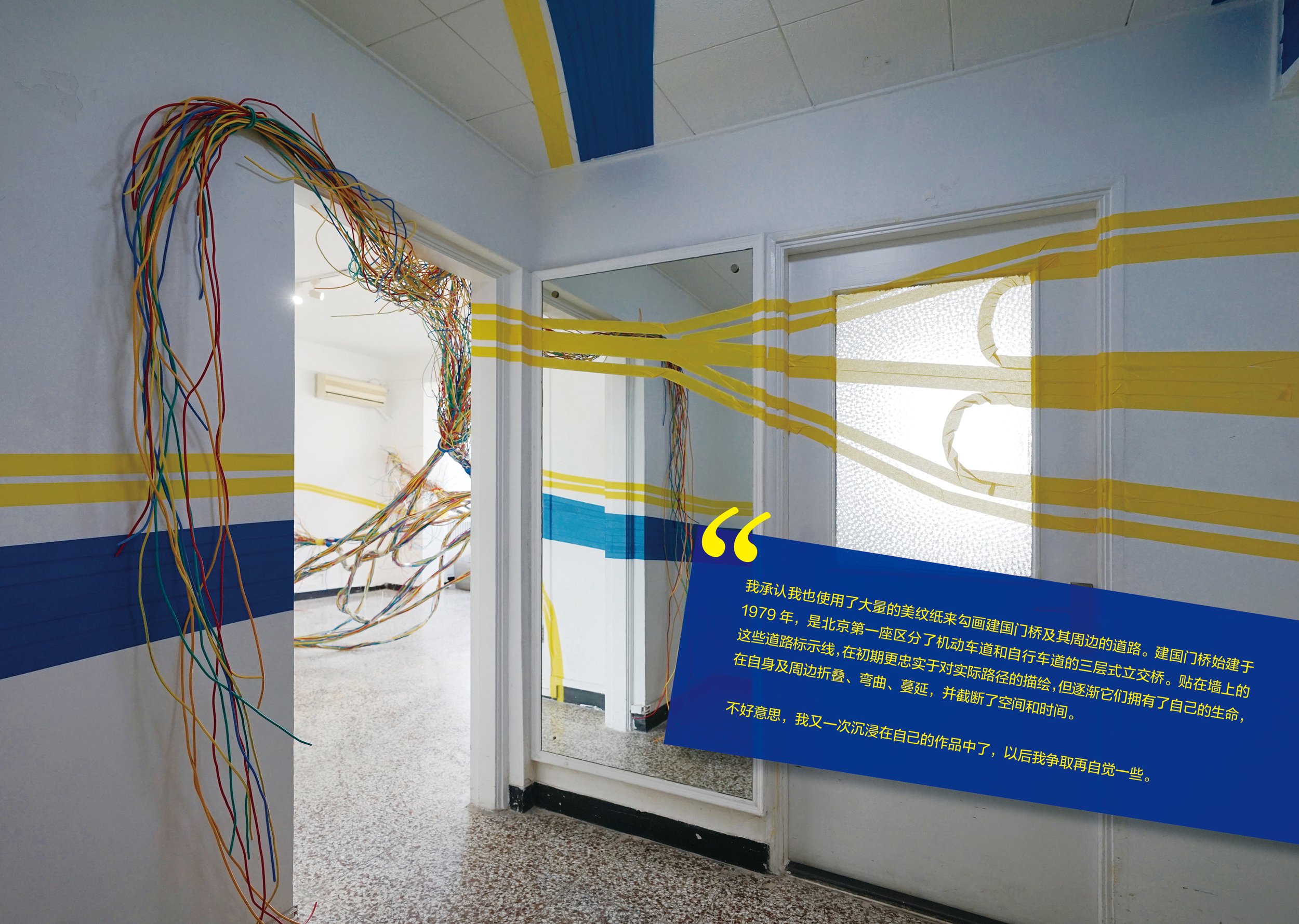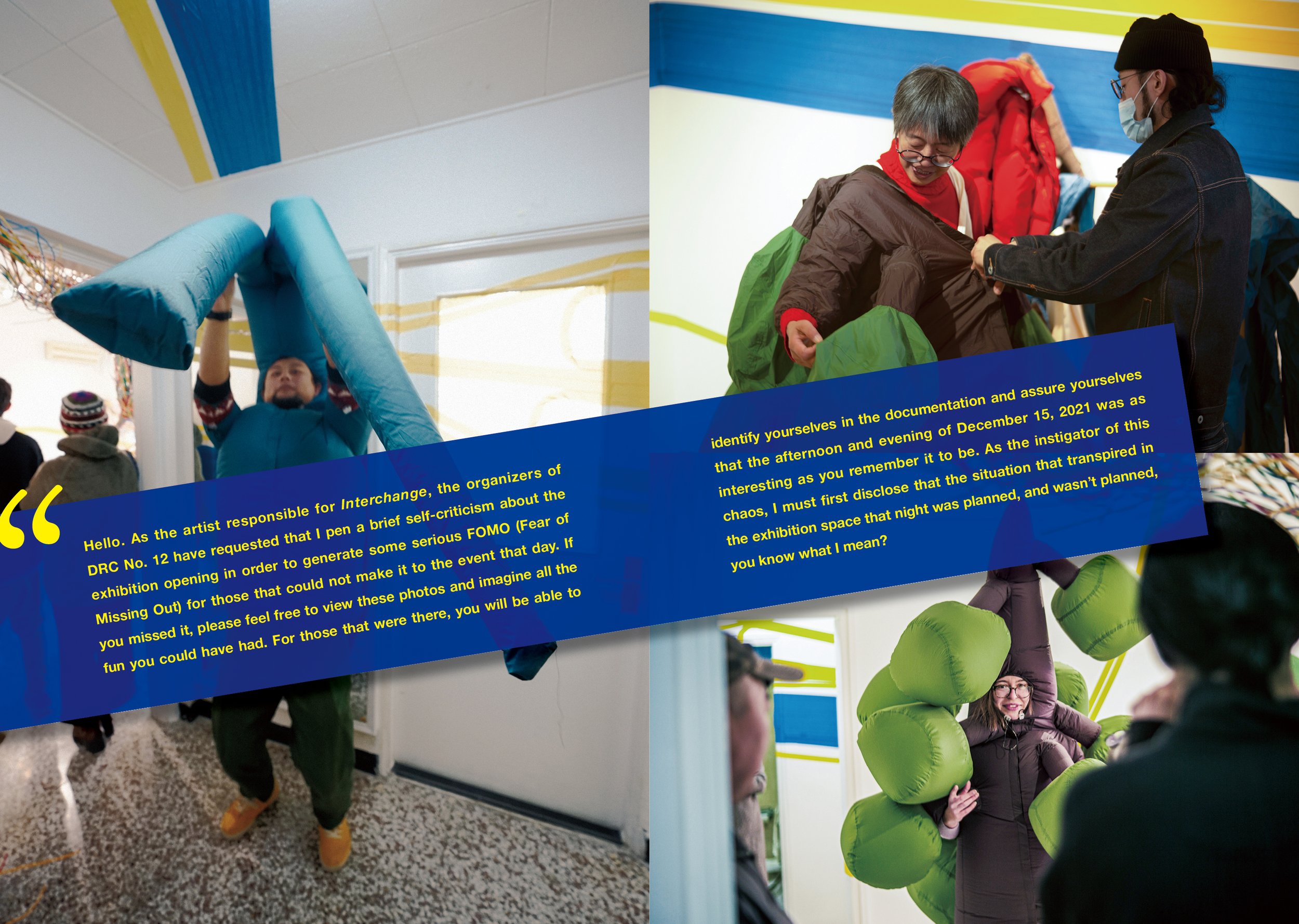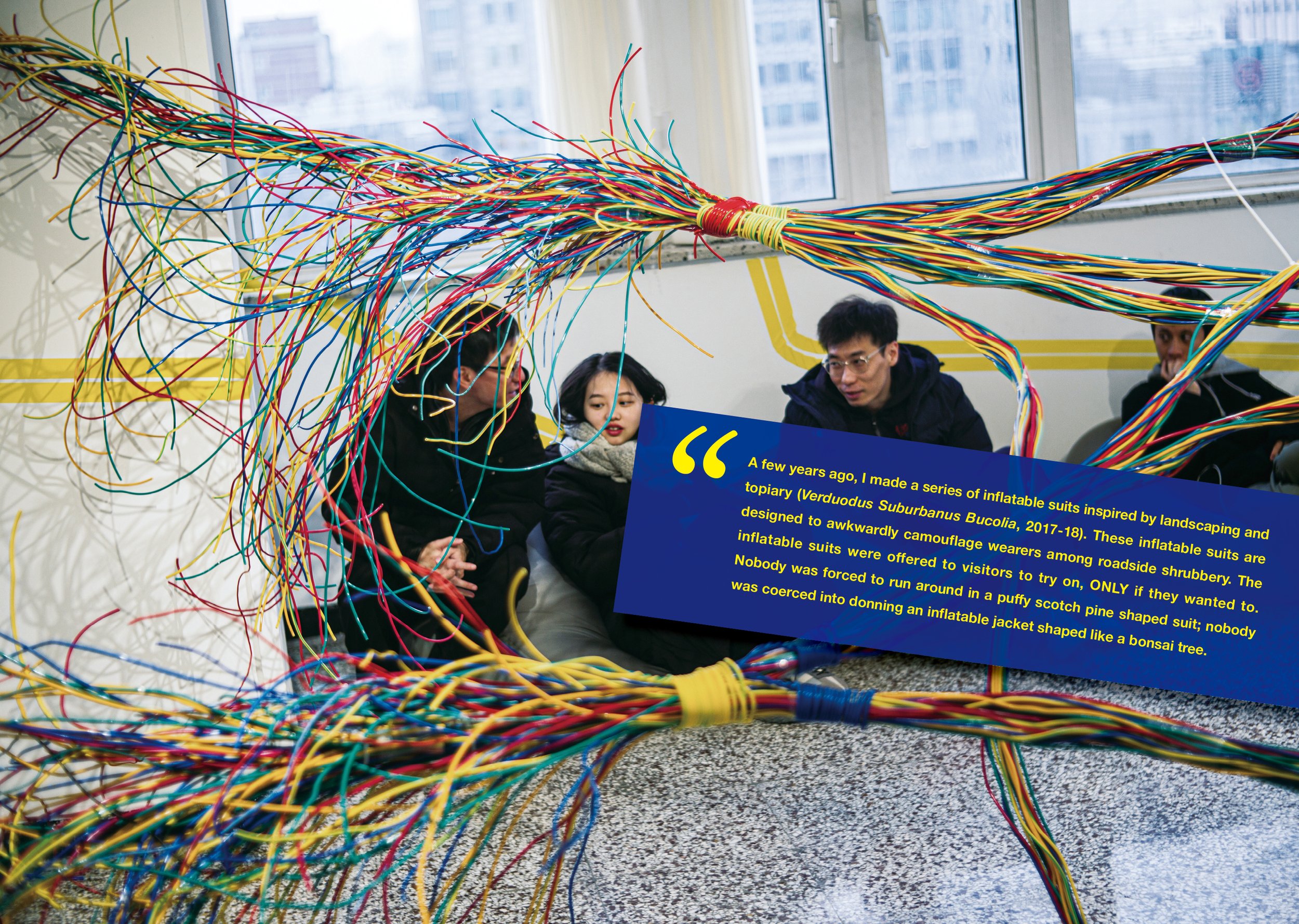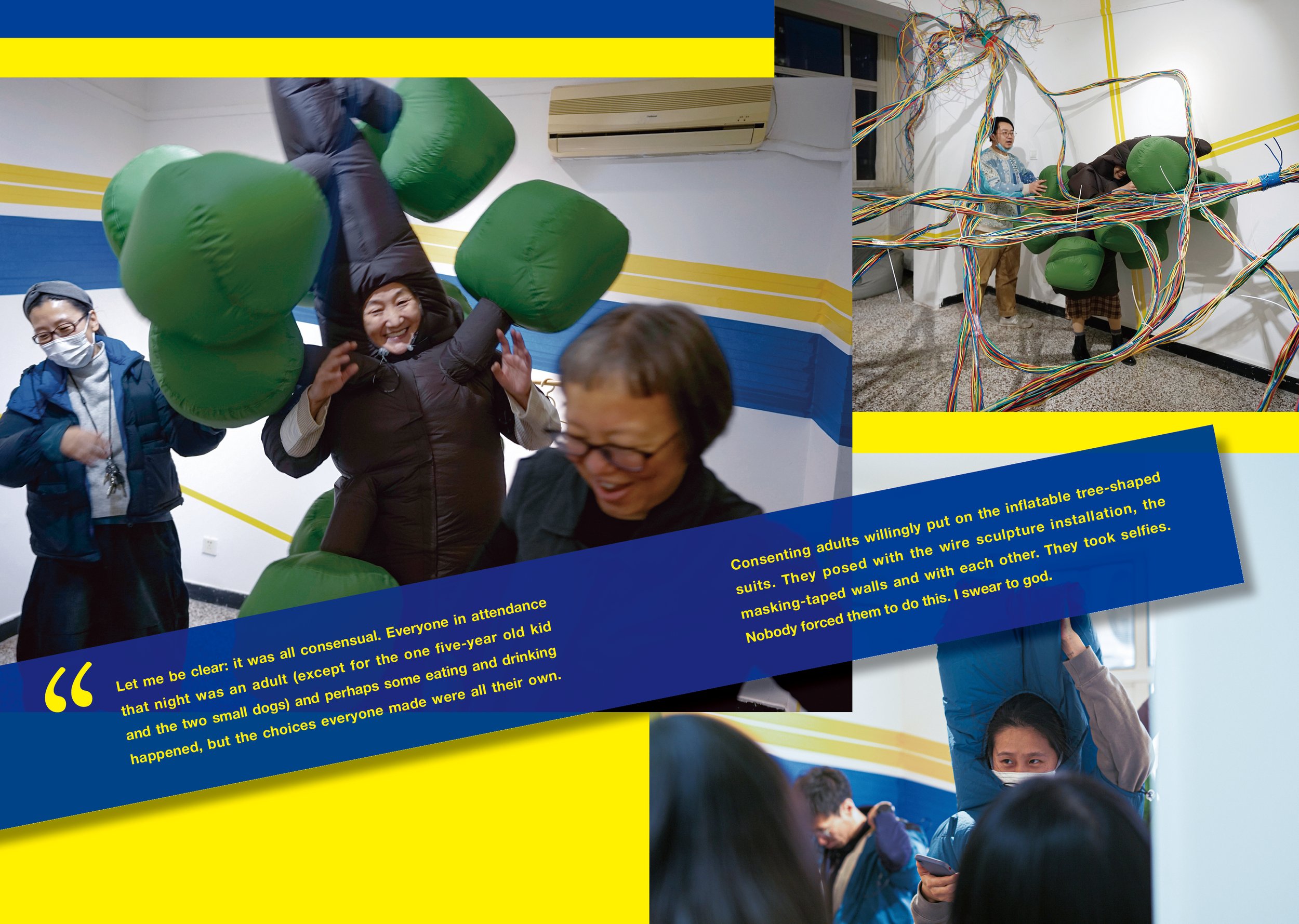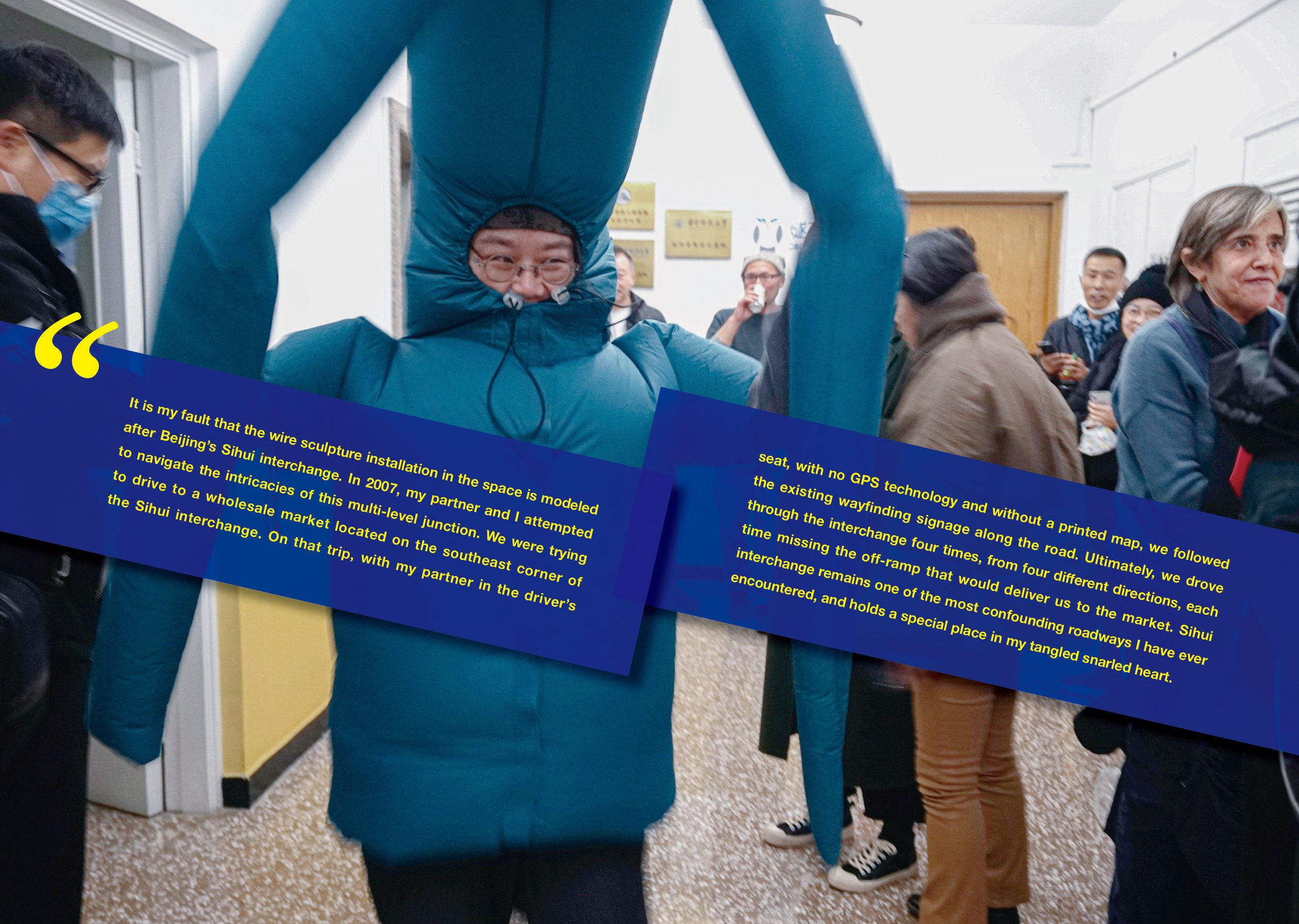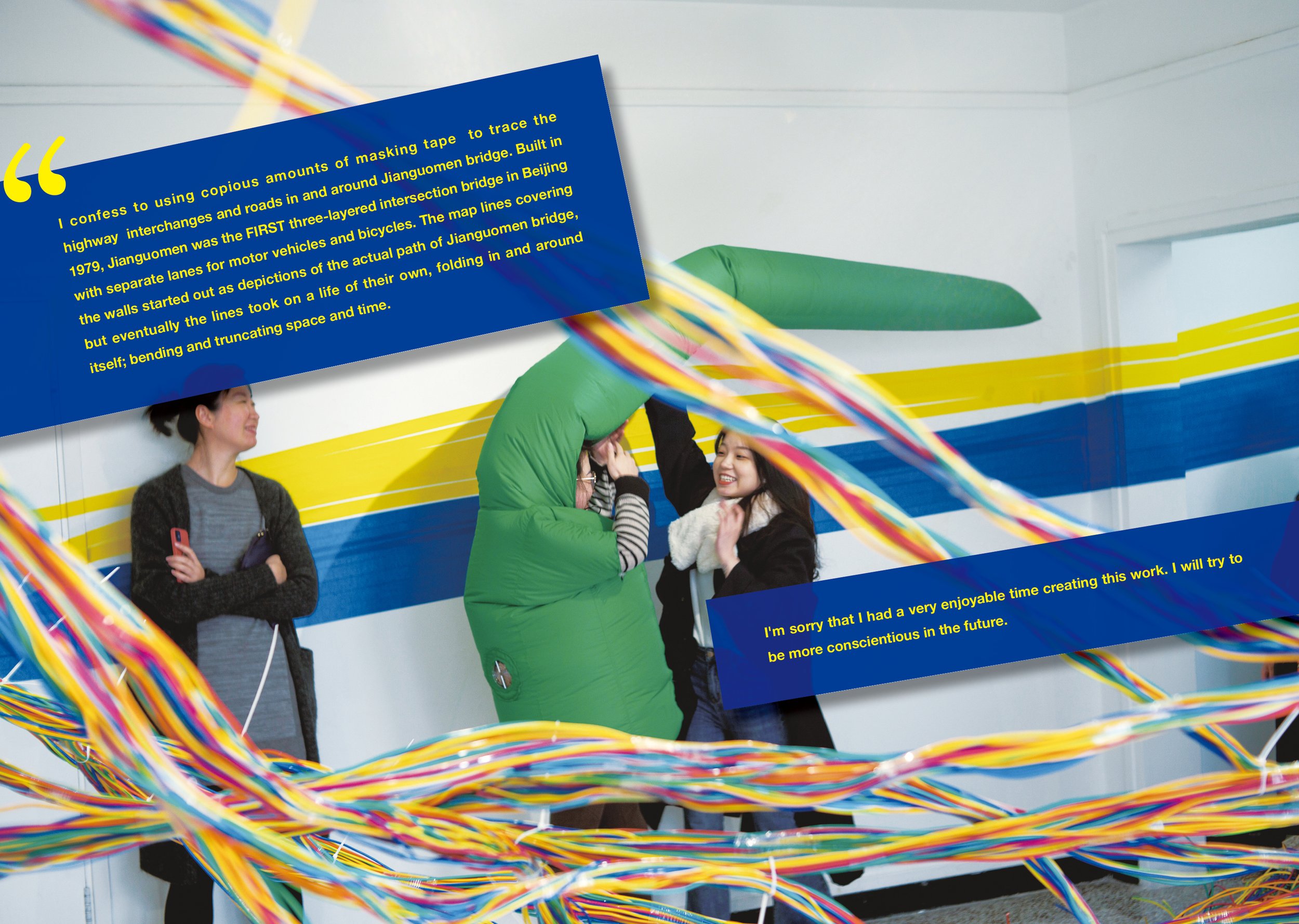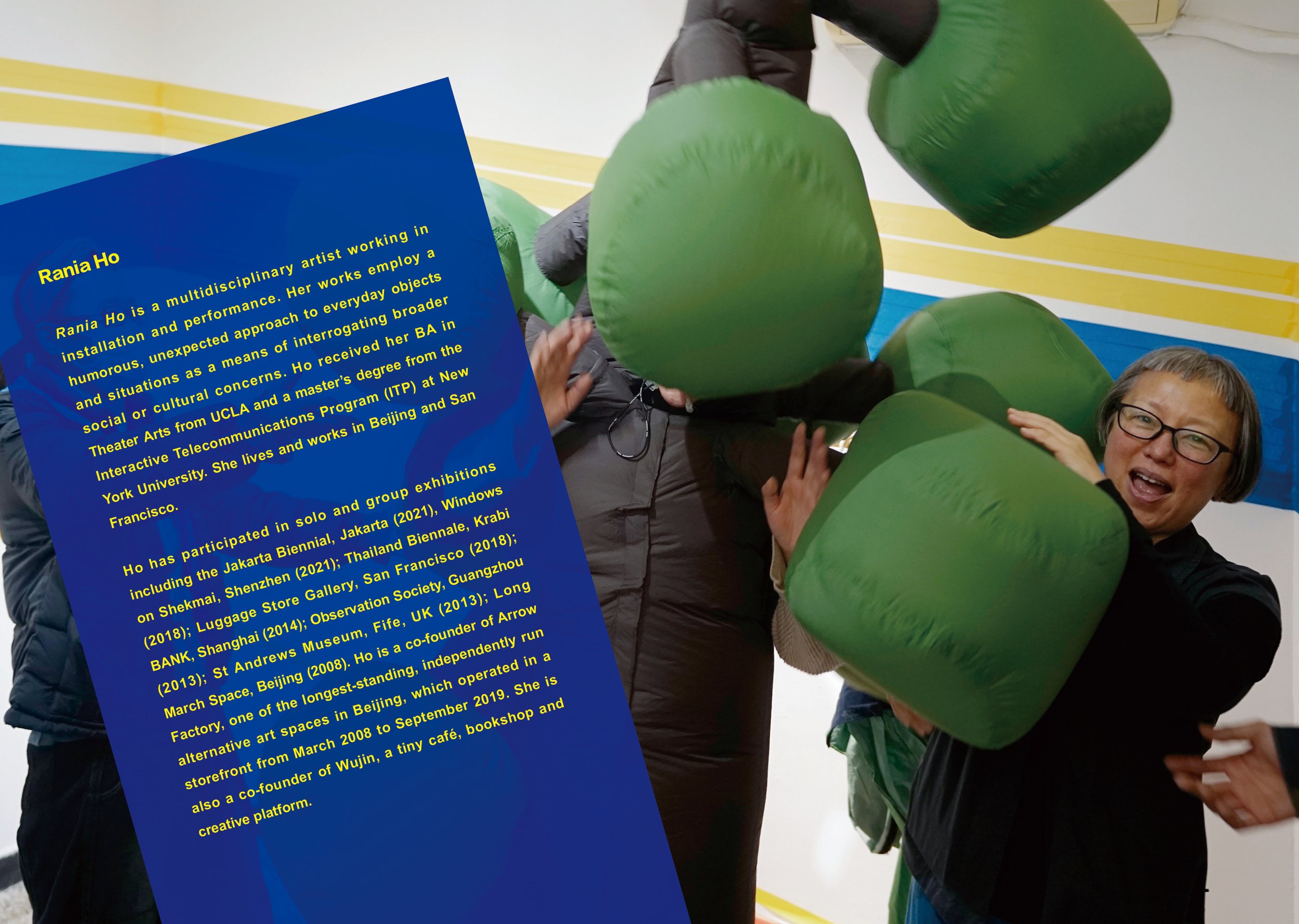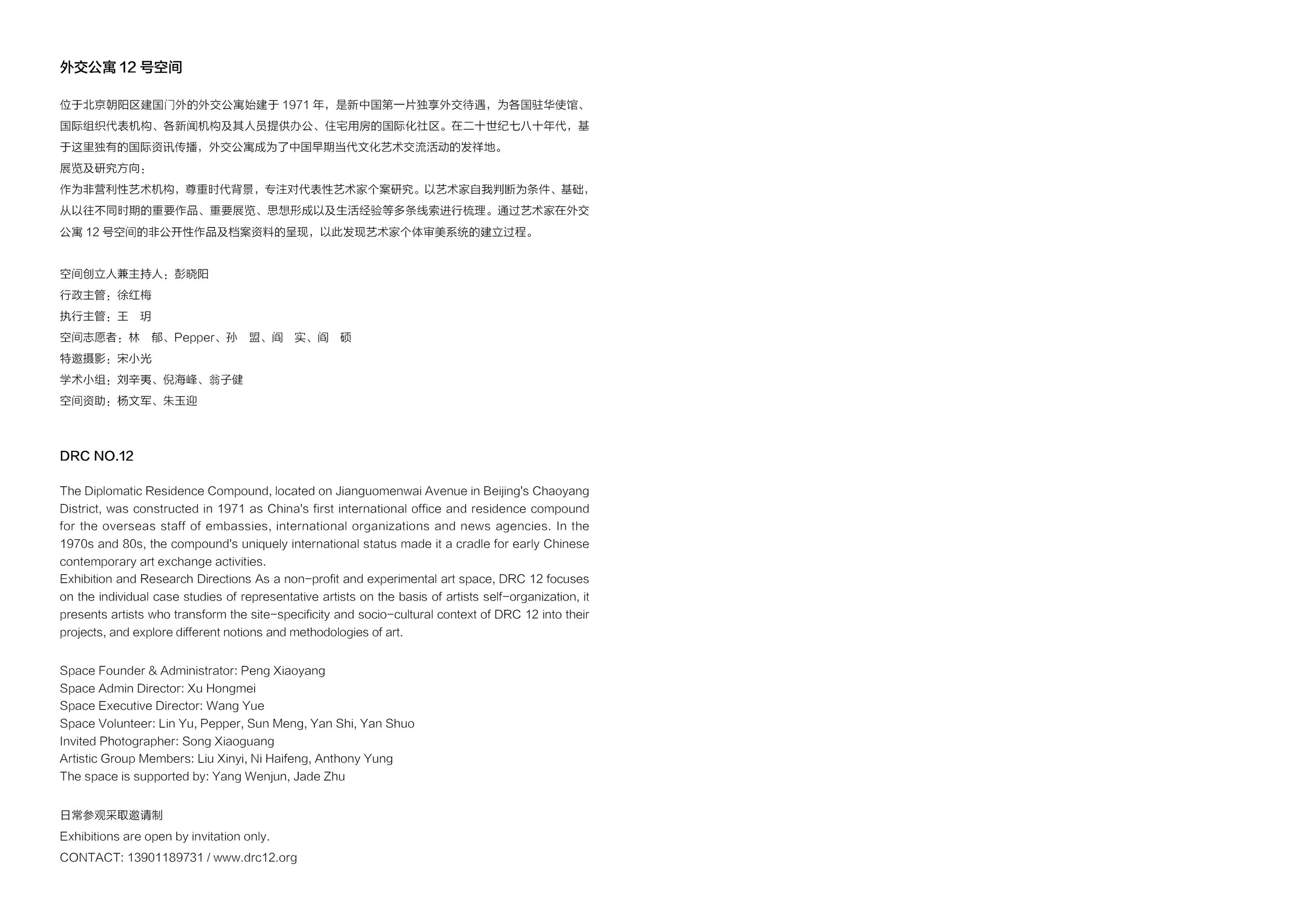The inelegant space of a roadway junction and its adjacent green space occupies an inordinate amount of energy and resources in our urban landscape. Interchange considers our relationship to these types of transactional and transitory public spaces. The highway interchange is a transportation tool for moving goods and people to their destinations. Although not usually a space for contemplation unless immobile on it during a traffic jam, it is a large sculptural mass that demands physical, visual and mental attention. In the past, resources might have been allocated towards constructing monumental and symbolic structures like pyramids, temples, or (Great) walls. Nowadays, modern society builds roads.
Interchange seeks new perspectives on the habitual routes we carve through urban infrastructure and public space, exploring the interchange as metaphorical expression of in-between-ness; a space of (missed) connections, crossed paths, obstructions and detours.
道路交汇处及其绿化带占据了城市景观的一大部份,也耗费著大量的能源及资源。这些交错过渡的公共空间正是《立交》的主题。在高速公路的交汇处,人和货物也高速转换,奔向各自的目的地。除非不幸堵车,否则人们绝不会在这儿停下来细心观察,不会发现它原来是一件如此庞大的雕塑体,处处影响着我们的身体、视觉和心理感知。这样的人力物力,在古代社会大概只会用于建造那些具备象征意味和纪念碑价值的东西,比如金字塔、庙宇,和城墙(尤其是万里长城),而在现代社会,被建造的却只有路,和更多的路。在《立交》中,我们将找到新的视角,以重新察看那些被习以为常的城市基建和公共空间交汇处,一个充满接通和不接通、交叉路径、阻塞和改造的空间,它难道不是一个关於中间状态的大喻体吗?
On Dec 15, 2021, Rania Ho‘s solo project Interchange opened at DRC No. 12. The following is an expression of the project by the artist herself.
2021年12月15号何颖宜个人项目《立交》在外交公寓12号开展。以下是艺术家本人对这个项目的一个表述。
Hello, as the artist responsible for “Interchange,” the organizers of DRC No. 12 have requested that I pen a brief self-criticism about the exhibition opening in order to generate some serious FOMO (Fear of Missing Out) for those that could not make it to the event that day. If you missed it, please feel free to scroll through the attached photos and imagine all the fun you could have had. For those that were there, you will be able to identify yourselves in the documentation and assure yourselves that the afternoon and evening of December 15, 2021 was as interesting as you remember it to be.
As the instigator of this chaos, I must first disclose that the situation that transpired in the exhibition space that night was planned, and wasn’t planned, you know what I mean? A few years ago, I made a series of inflatable suits inspired by landscaping and topiary, Verduodus Suburbanus Bucolia. These inflatable suits are designed to awkwardly camouflage wearers among roadside shrubbery. The inflatable suits were offered to visitors to try on, ONLY if they wanted to. Nobody was forced to run around in a puffy scotch pine shaped suit; nobody was coerced into donning an inflatable jacket shaped like a bonsai tree. Let me be clear: it was all consensual. Everyone in attendance that night was an adult (except for the one five-year old kid and the two small dogs) and perhaps some eating and drinking happened, but the choices everyone made were all their own. Consenting adults willingly put on the inflatable tree-shaped suits. They posed with the wire sculpture installation, the masking-taped walls and with each other. They took selfies. Nobody forced them to do this. I swear to god.
It is my fault that the wire sculpture installation in the space is modeled after Beijing’s Sihui interchange. In 2007, my partner and I attempted to navigate the intricacies of this multi-level junction. We were trying to drive to a wholesale market located on the southeast corner of the Sihui interchange. On that trip, with my partner in the driver’s seat, with no GPS technology and without a printed map, we followed the existing wayfinding signage along the road. Ultimately, we drove through the interchange four times, from four different directions, each time missing the off-ramp that would deliver us to the market. Sihui interchange remains one of the most confounding roadways I have ever encountered, and holds a special place in my tangled snarled heart.
I confess to using copious amounts of masking tape (美纹纸) to trace the highway interchanges and roads in and around Jianguomen bridge. Built in 1979, Jianguomen was the FIRST three-layered intersection bridge in Beijing with separate lanes for motor vehicles and bicycles. The map lines covering the walls started out as depictions of the actual path of Jianguomen bridge, but eventually the lines took on a life of their own, folding in and around itself; bending and truncating space and time.
I’m sorry that I had a very enjoyable time creating this work. I will try to be more conscientious in the future.
WORKS
OPENING SCENE




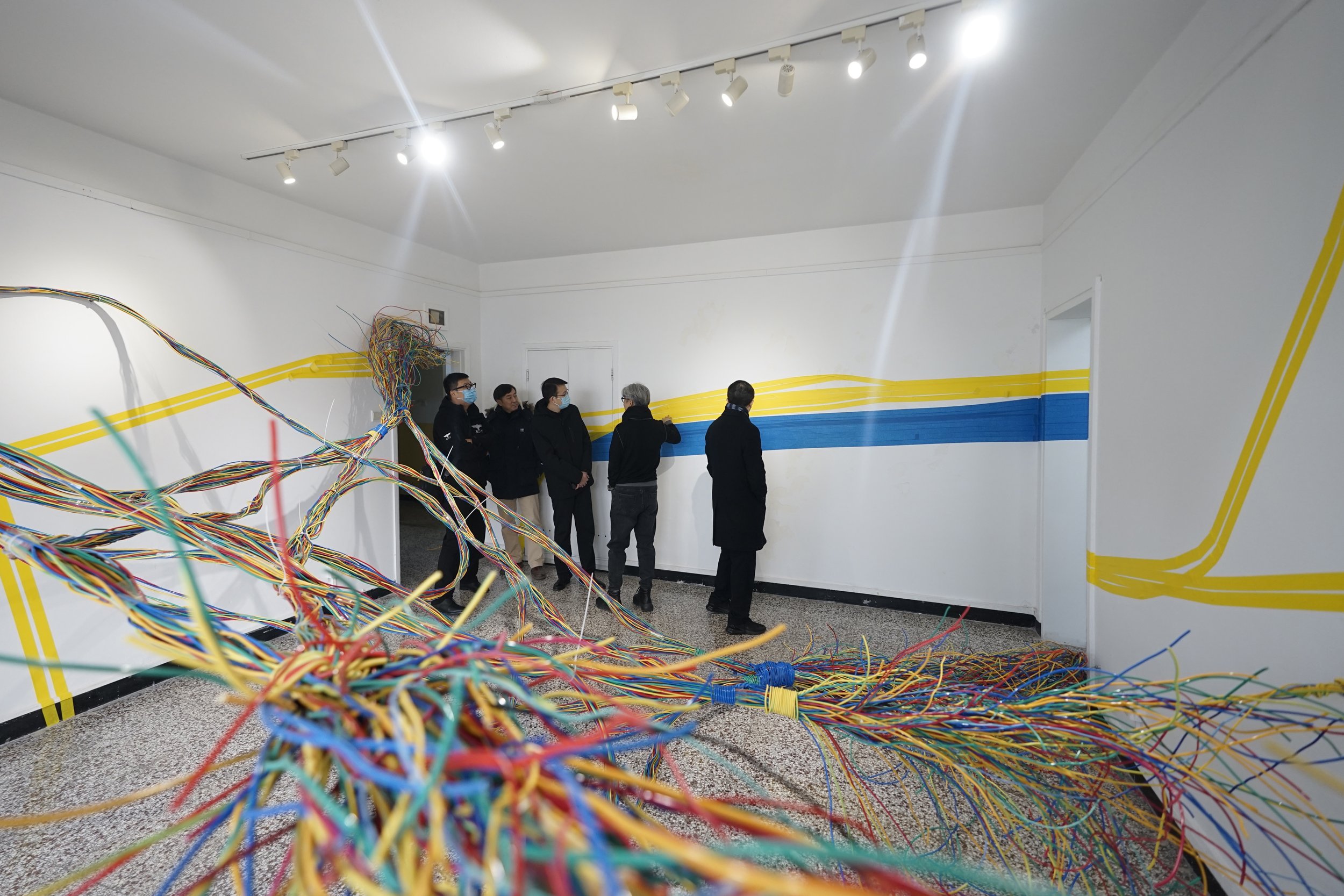




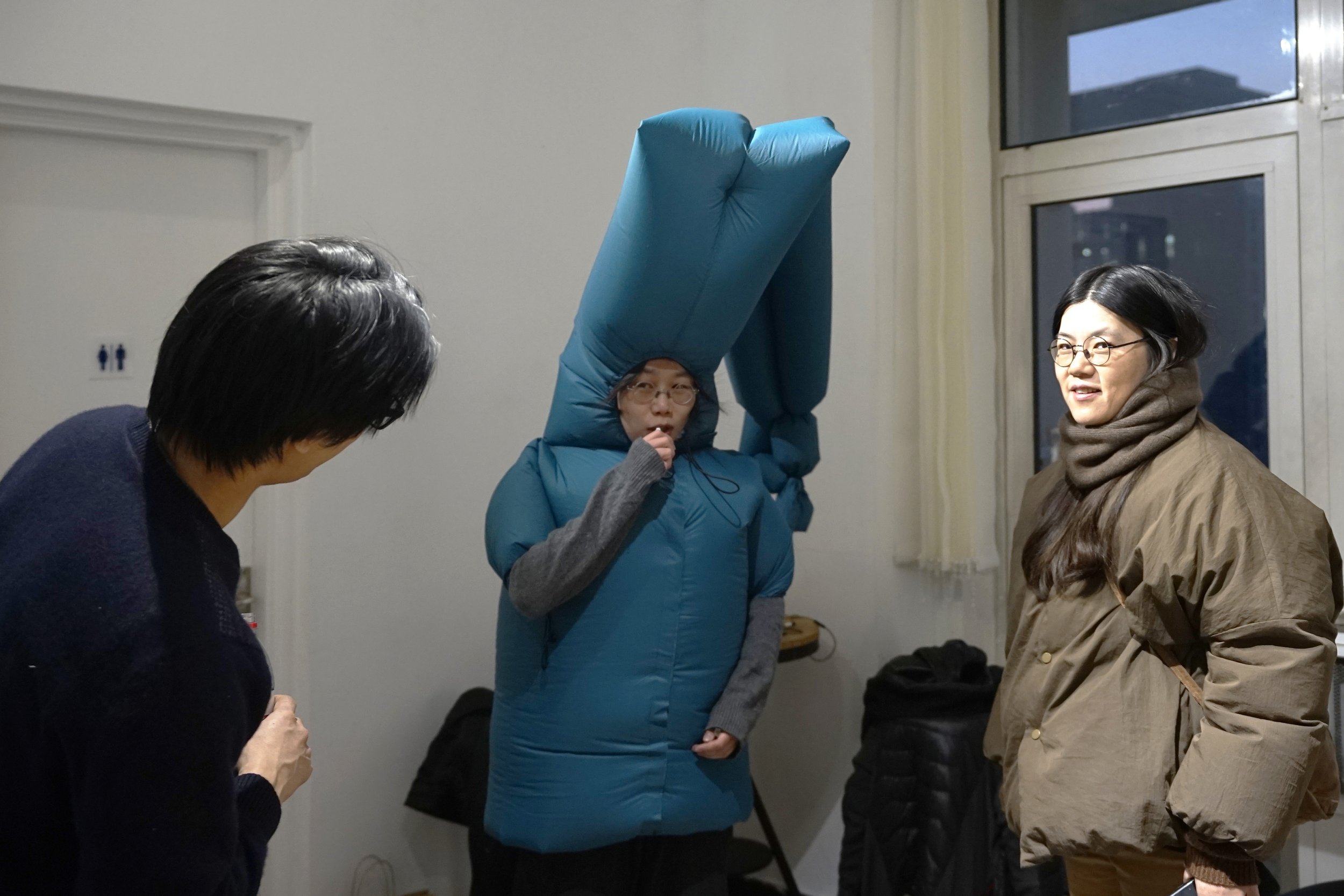







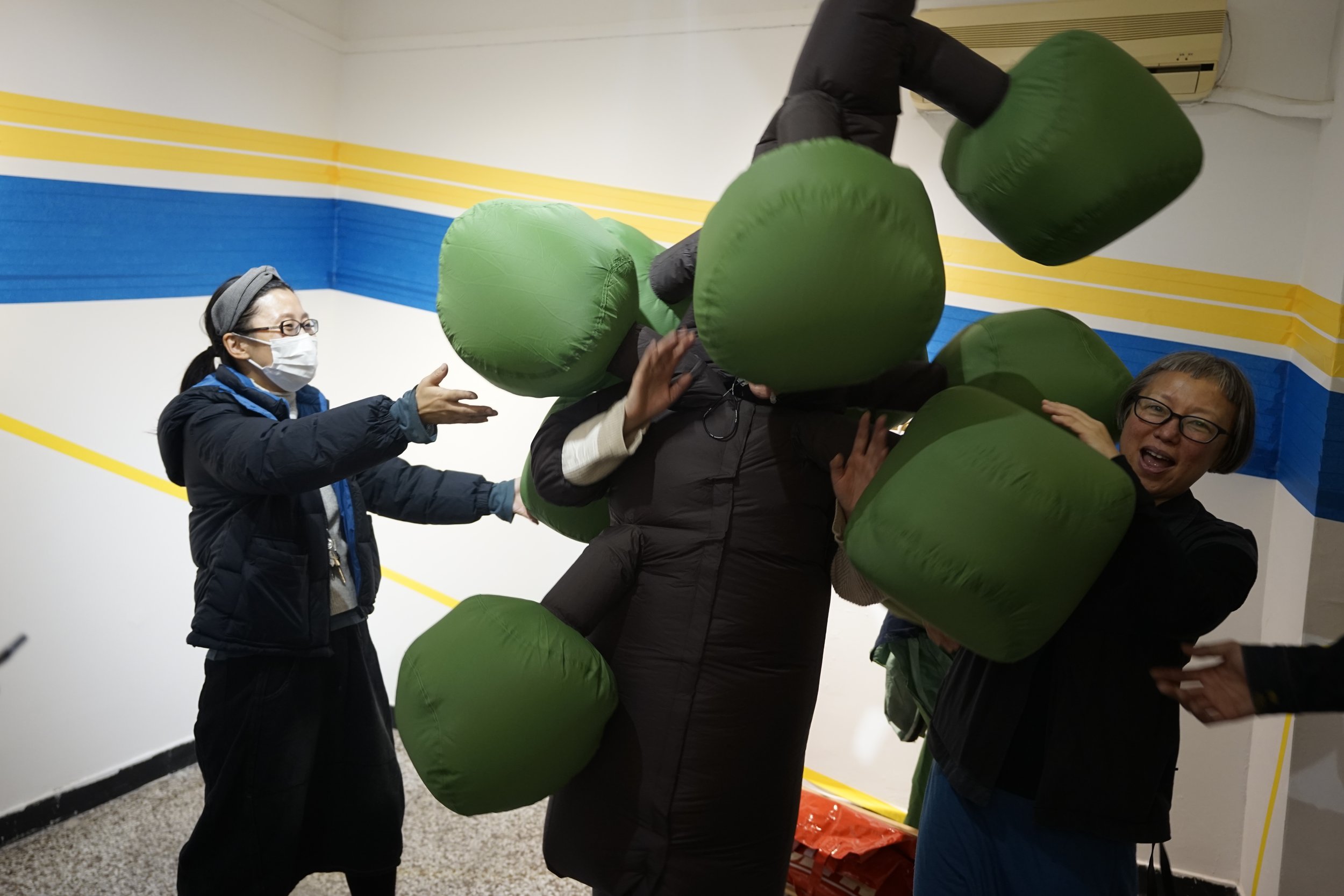
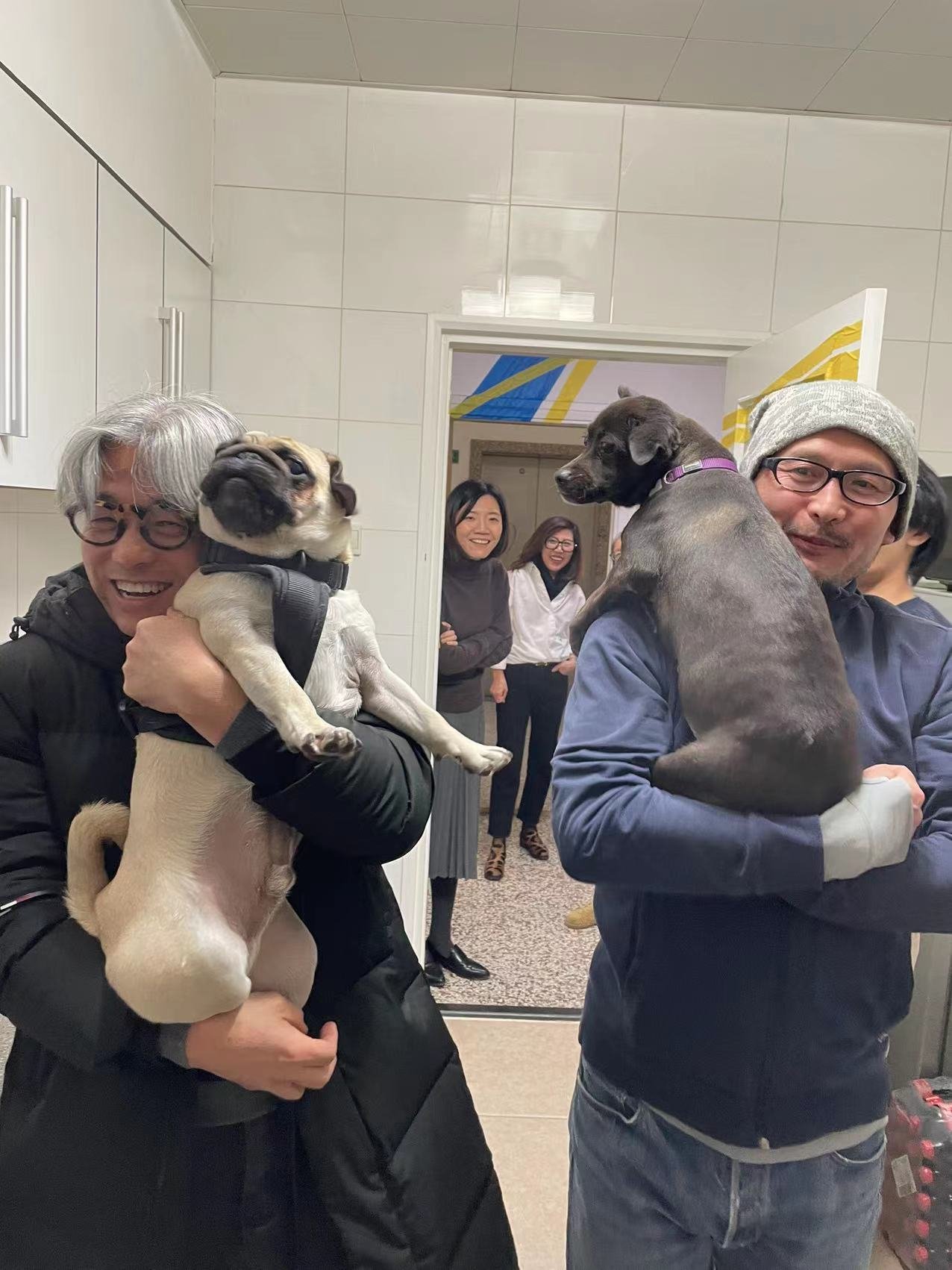
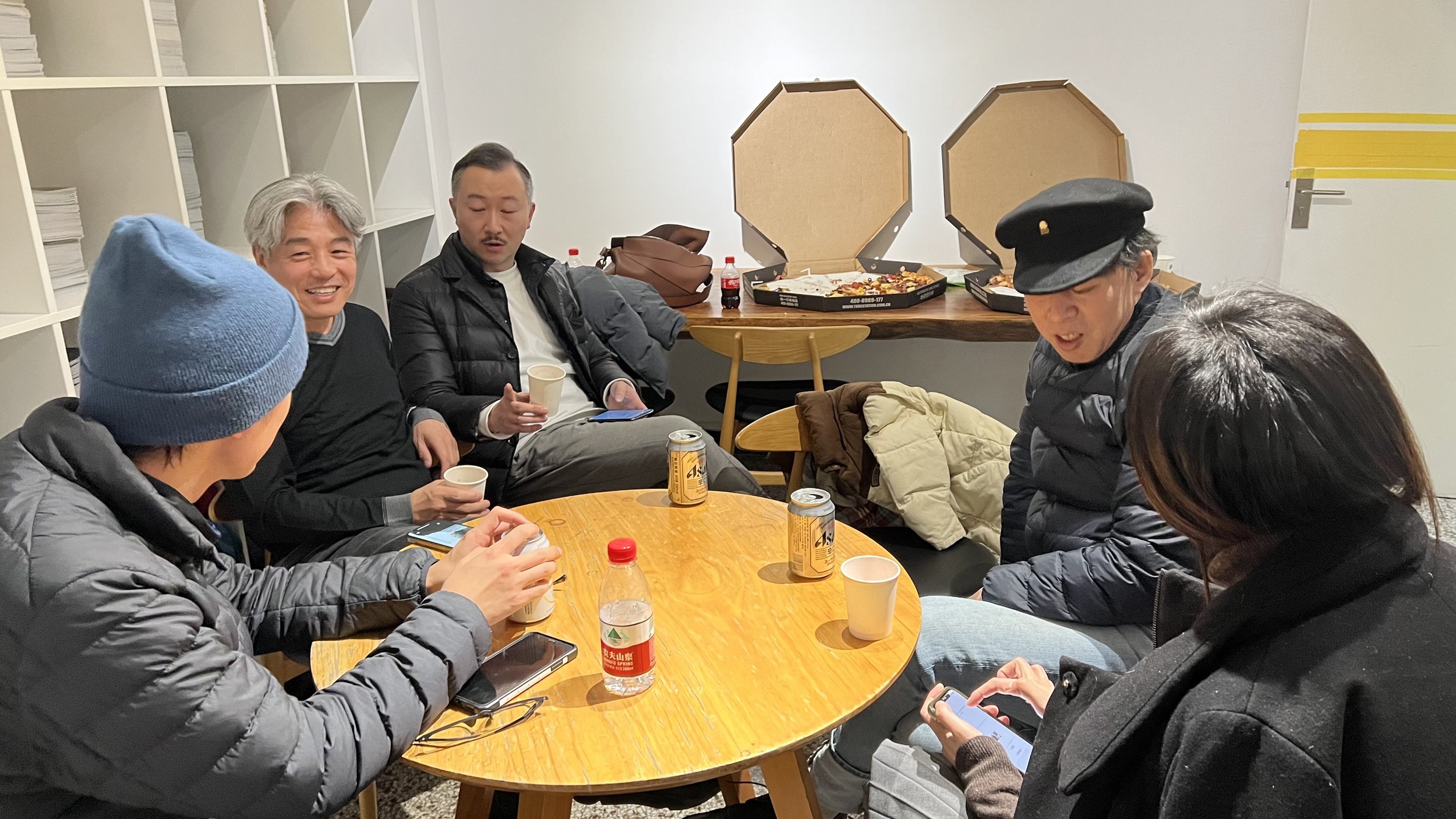
PUBLICATION
